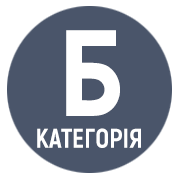GEOLOGICAL-GENETIC TYPES, MINERAL-GEOCHEMICAL FEATURES AND PHYSICAL-CHEMICAL CONDITIONS OF FORMATION OF HYDROTHERMAL AND PLACER GOLD DEPOSITS
DOI:
https://doi.org/10.30970/min.75.01Keywords:
gold, deposit, genesis, geological-genetic type of mineralization, mineralogy, geochemistry, thermobarogeochemistry, hydrothermal processes, placer depositAbstract
The most important issues in the geology, mineralogy, and geochemistry of gold that specialists typically encounter during prospecting, exploration, and reserve estimation in various native and placer deposits are analyzed. General information on the chemistry of gold, the latest data on its geochemistry and forms of transport under hydrothermal conditions are presented. The specifics of the main geochemical associations of gold and its mineral paragenesis in ores are characterized. The mineralogy of gold (intermetallic compounds, tellurides and selenides of gold, etc.) and the geological and geochemical types of gold and gold-bearing mineralization are described. The geological, structural and thermobarogeochemical conditions of the different depth zones gold deposits localization are compared. The metamorphogenic-hydrothermal class of gold deposits includes deposits of great depths that were formed in the highest pressure (> 300‒200 MPa) and most thermostated physicochemical conditions (ΔT/100 m ‒ from 5‒6 to 10 °C), the time gradient ΔT/ΔP is 2.5–1.0 °C per 1 MPa. Magmatogenic-hydrothermal deposits were formed at medium depths in predominantly mediumbaric conditions (ΔT/100 m ‒ from 200‒100 to 40‒30 MPa at the end of formation) and a moderately thermostated regime (ΔT = 15‒20 °C) with a gradient ΔT/ΔP = 2.0‒8.8 °C per 1 MPa. The physicochemical system of formation of volcanogenic-hydrothermal shallow deposits was low-depth (4.1‒20.0 MPa) non-thermostated (ΔT/100 m – from 25‒30 to 50 °C) with a time gradient ΔT/ΔP of 8‒12 °C per 1 MPa, due to which the vertical range of gold-silver mineralization is the smallest. Exogenous types of gold mineralization are also important, first of all, the factors of their formation ‒ primary sources, climatic and geomorphological conditions. Metamorphosed alluvial deposits deserve special attention, among which the «geological monster» ‒ Witwatersrand stands out. The geological structure, material composition of conglomerates with gold and uraninite are described, and debatable views on the genesis of the deposit are given.
References
Бобров О. Б. Корисні копалини України. Ч. 1. Золоторудні родовища Українського щита. Львів : ВЦ ЛДУ, 1997. 58 с.
Бобров О. Б., Гурський Д. С., Сіворонов А. О. та ін. Геолого-генетична типізація золоторудних родовищ України. Київ : УкрДГРІ, 2004. 368 с.
Золото в надрах України. Вісник Львівського університету Серія геологічна. 1992. Вип. 11. 160 с.
Кульчицька Г., Черниш Д., Сєтая Л. Українська номенклатура мінералів. Київ : ВД «Академперіодика», 2022. 547 с. https://doi.org/10.15407/akademperiodyka.463.547.
Ляхов Ю., Павлунь М. Термобарогеохімічне обґрунтування рудно-формаційної належності ендогенних золоторудних родовищ України: теоретичні та методологічні аспекти. Мінералогічний збірник. 2002. № 52. Вип. 1. С. 68‒73.
Ляхов Ю., Павлунь М., Ціхонь С. Термостатованiсть палеогiдросистем як основа генетичної типiзацiї золоторудних родовищ України (за даними дослідження флюїдних включень). Мінералогічний збірник. 2000. № 50. Вип. 2. С. 38‒43.
Ляхов Ю. В., Павлунь М. М., Шваєвський О. В. Методичні рекомендації до вивчення курсу «Геолого-генетичні типи золоторудних полів». Львів : Видав. центр ЛНУ імені Івана Франка, 2011. 37 с.
Ляхов Ю. В., Павлунь М. М., Ціхонь С. І. Геологія корисних копалин. Ч. 1. Рудогенез. Львів : ЛНУ імені Івана Франка, 2012. 285 с.
Ляхов Ю. В., Павлунь М. М., Пахнющий Ю. В., Луньов Г. О. Критерії прогнозної оцінки золотоносних територій (теоретичні та методологічні засади). Ч. 1. Вісник Львівського університету. Серія геологічна. 2003. Вип. 17. С. 33–42.
Ляхов Ю. В., Павлунь М. М., Пахнющий Ю. В., Луньов Г. О. Критерії прогнозної оцінки золотоносних територій (теоретичні та методологічні засади). Ч. 2. Вісник Львівського університету. Серія геологічна. 2004. Вип. 18. С. 3–16.
Павлунь М. Термобарогеохімічні аспекти геолого-генетичної і рудно-формаційної типізації золотого зруденіння Бельтау-Курамінського вулканоплутонічного поясу у Східному Узбекистані. Мінералогічний збірник. 2002. № 52. Вип. 2. С. 78‒86.
Павлунь М. Генетичні особливості золоторудних родовищ. Мінералогія України: сучасний стан і перспективи : матеріали ХХІІ наук. читань імені акад. Євгена Лазаренка. Львів : Видавничий центр ЛНУ імені Івана Франка, 2022. С. 63‒77.
Павлунь М. Про необхідність доповнення схеми генетичної класифікації родовищ корисних копалин класом метаморфогенно-гідротермальних родовищ гідротермальної групи. Вісник Львівського університету. Серія геологічна. 2023. Вип. 37. С. 3‒11. https://doi.org/10.30970/vgl.37.01.
Павлунь М. Метаморфогенно-гідротермальне зруденіння Українського щита: геолого-структурне положення, фізико-хімічні умови формування і термобарогеохімічна зональність. Зб. статей за матеріалами XXXV наук. сесії НТШ. Комісія фізики Землі. Геологічна комісія. Львів, 2024. С. 73‒78.
Павлунь М., Гайовський О., Сливко Л., Петрівський П. Фізико-хімічні й мінералого-геохімічні особливості та промислові кондиції золота. Стан, проблеми і перспективи розвитку мінералогічної науки та освіти в Україні : матеріали ХХІІІ наук. читань імені акад. Євгена Лазаренка. Львів : ЛНУ імені Івана Франка, 2024. С. 126‒129. URL: https://geology.lnu.edu.ua/wp-content/uploads/2024/09/Materialy-CHytan.pdf.
Павлунь М. М. Геолого-економічні аспекти формування та функціонування мінерально-сировинної бази золота. Зб. наук. праць УкрДГРІ. Київ, 2001. С. 60–65.
Павлунь М. М. Про метаморфогенно-гідротермальну природу родовищ золоторудних формацій Українського щита. Мінералогічний журнал. 2015. Т. 37. № 3. С. 98‒111. URL: http://jnas.nbuv.gov.ua/article/UJRN-0000536069.
Antrobus E.S.A. Application of sedimentology to the Witwatersrand Sequence. The Mineral Resources of the Republic of South Africa. 1976. Vol. 7. P. 69‒73.
Buddington A. F. High-temperature mineral associations at shallow to moderate depth. Econ. Geol. 1935. Vol. 30. P. 205‒222.
Desmarais M., Pirade F., Jingsi Z., Rene E.R. Biohydrometallurgical processes for the recovery of precious and base metals from waste electrical and electronic equipment: Current trends and perspectives. Bioresource Technology Reports. 2020. Vol. 11 (2‒3). Article 100526. https://doi.org/10.1016/j.biteb.2020.100526.
Frimmel H.E., Le Roex A.P., Knight J., Minter W.E.L. A case study of the postdepositional alteration of the Witwatersrand Basal Reef Gold Placer. Econ. Geol. 1993. Vol. 88. No 2. P. 249‒265. https://doi.org/10.2113/gsecongeo.88.2.249.
Graton L.C. The depth zones of ore deposition. Econ. Geol. 1933. Vol. 28. P. 513‒555.
Hiemstra S.A. Mineralogy of the Reefs. The Mineral Resources of the Republic of South Africa. 1976. Vol. 7. P. 65‒69.
Lindgren W. Mineral Deposits (4th ed.). New York‒London : McGraw-Hill Book Company, 1933. 930 p.
Minter W.E.L. Irrefutable detrital origin of Witwatersrand gold and evidence of eolian signatures. Econ. Geol. 1999. Vol. 94. No 5. P. 665‒670. https://doi.org/10.2113/gsecongeo.94.5.665.
Minter W.E.L., Goedhart M., Knight J., Frimmel H.E. Morphology of Witwatersrand gold grains from the Basal Reef: Evidence for their detrital origin. Econ. Geol. 1993. Vol. 88. P. 237‒248. https://doi.org/10.2113/gsecongeo.88.2.237.
Niggli P. Ore Deposits of Magmatic Origin. London : Thomas Murby and Co., 1929. 93 p.
Schneiderhöhn H. Lehrbuch der Erzlagerstättenkunde. Jena : Verlag Von Gustav Fischer, 1941. 858 S.
Не в грошах щастя: історії про найбільші у світі золоті самородки. Укр. журнал «Фокус». URL: https://focus.ua/uk/technologies/549179-ne-v-groshah-shchastya-istorijipro-naybilshi-u-sviti-zoloti-samorodki.
5 найбільших золотих самородків у світі (які все ще існують) ‒ великі золоті самородки. Ваш інформаційний портал Largest HQ. URL: https://largesthq.com/najbilshi-zolotisamorodki.
Auroantimonate: Mineral information, data and localities. Mineralogical online database Mindat.org. URL: https://www.mindat.org/min-6810.html.








